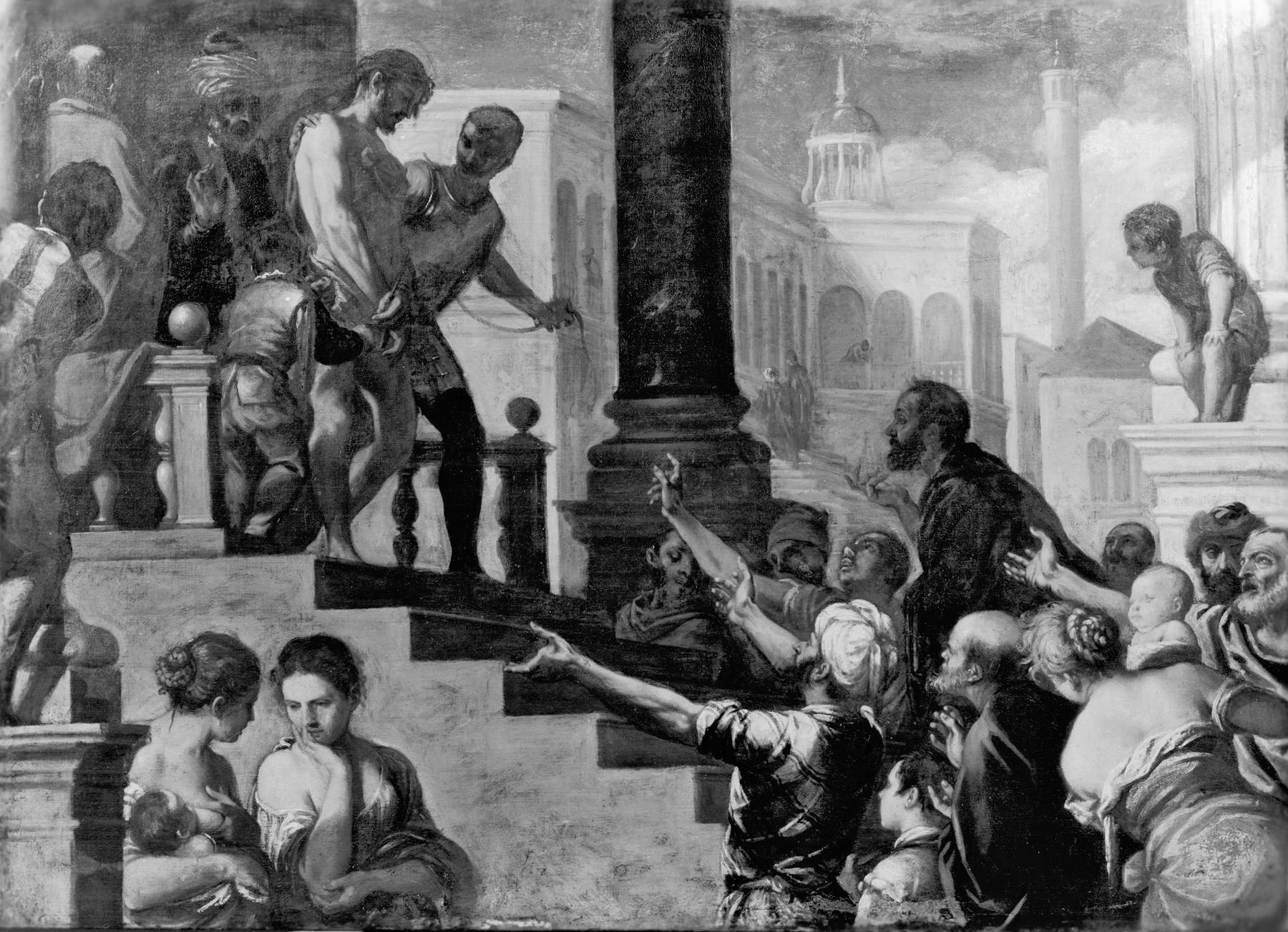"Ecce Homo"
(Baroque Europe )
Christ stands at the top of the stairs and is mocked by a Roman soldier, while the Roman governor Pontius Pilate gestures to the crowd, declaring, "Look, I am bringing him out to you to let you know that I find no case against him" (John 19:4).
The Spanish painter Orrente's use of dark silhouettes for figures and architecture set into a narrow plane next to the surface of the painting heightens the emotional intensity of the event and reflects the influence of works by 16th-century Venetian painters, such as the Bassano family, Tintoretto, and Veronese. The architecture also recalls that of Venice. Orrente's trip to Venice must have taken place shortly before 1611, by which time the painter was back in Spain.
Provenance
Provenance (from the French provenir, 'to come from/forth') is the chronology of the ownership, custody, or location of a historical object. Learn more about provenance at the Walters.
Henry Walters, Baltimore, 1909 [mode of acquisition unknown]; Walters Art Museum, 1931, by bequest.
Conservation
| Date | Description | Narrative |
|---|---|---|
| 6/29/1942 | Treatment | examined for condition; varnish removed or reduced |
| 3/7/1991 | Examination | examined for condition; other |
Geographies
Spain, Murcia
(Place of Origin)
Italy, Venice (Place of Origin)
Measurements
36 x 50 5/8 in. (91.5 x 128.6 cm)
Credit Line
Acquired by Henry Walters, 1909
Location in Museum
Accession Number
In libraries, galleries, museums, and archives, an accession number is a unique identifier assigned to each object in the collection.
In libraries, galleries, museums, and archives, an accession number is a unique identifier assigned to each object in the collection.
37.575


